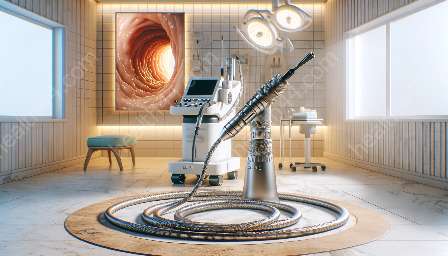ENT endoscopes, also known as otoscopes, have become integral in the field of medical devices & equipment. These sophisticated instruments offer clinicians a closer look at the inner workings of the ear, nose, and throat (ENT) regions, facilitating accurate diagnoses and minimally invasive procedures. In this comprehensive guide, we'll delve into the world of ENT endoscopes, exploring their technology, applications, and impact on the medical industry.
The Evolution of ENT Endoscopes
ENT endoscopes have undergone significant technological advancements, revolutionizing the way medical professionals diagnose and treat ENT-related conditions. Traditionally, physicians relied on mirrors and handheld otoscopes to examine the ear canal, nasal passages, and throat. However, the introduction of flexible and rigid endoscopes equipped with advanced imaging systems has transformed the diagnostic and therapeutic landscape, offering enhanced visualization and precise maneuverability.
Technology Behind ENT Endoscopes
Modern ENT endoscopes are equipped with high-definition imaging sensors, allowing for clear and detailed visualization of the ENT anatomy. These devices often feature adjustable light sources and miniature cameras, providing real-time images of the internal structures. Additionally, some advanced models are integrated with fiber-optic technology, enabling superior illumination and image transmission. The ergonomic design of ENT endoscopes enhances maneuverability and minimizes patient discomfort during examinations and procedures.
Applications in Medical Procedures
The versatility of ENT endoscopes extends to various medical procedures within the ENT specialty. These devices are commonly used in diagnostic investigations, enabling ENT specialists to identify pathologies such as ear infections, nasal polyps, and vocal cord abnormalities with high precision. Furthermore, ENT endoscopes play a crucial role in minimally invasive interventions, including endoscopic sinus surgeries, tympanoplasty, and laryngoscopy, minimizing the need for traditional open surgeries and reducing patient recovery time.
Integration with Medical Devices & Equipment
Incorporating ENT endoscopes into the realm of medical devices & equipment has led to the development of advanced endoscopic systems. These systems comprise innovative image processing units, video monitors, and ergonomic control interfaces, enhancing the overall user experience for medical professionals. The integration of ENT endoscopes with other medical devices, such as microsurgical instruments and suction devices, has further expanded their capabilities, enabling precise and controlled procedures.
Challenges and Future Innovations
While ENT endoscopes have significantly improved diagnostic and therapeutic outcomes, several challenges persist, including the need for continuous miniaturization, enhanced maneuverability, and cost-effectiveness. However, ongoing research and development efforts are focused on addressing these challenges by incorporating robotics, artificial intelligence, and enhanced imaging modalities into the next generation of ENT endoscopes, paving the way for more personalized and efficient patient care.
Conclusion
ENT endoscopes have undoubtedly redefined the landscape of medical devices & equipment, offering healthcare professionals unparalleled insights into the intricate ENT anatomy and enabling minimally invasive interventions with minimal patient discomfort. As technology continues to advance, the future holds promising innovations in ENT endoscopes, further solidifying their pivotal role in improving patient outcomes and reshaping the practice of ENT specialists globally.


